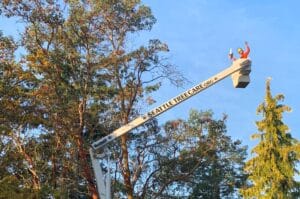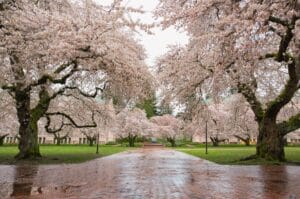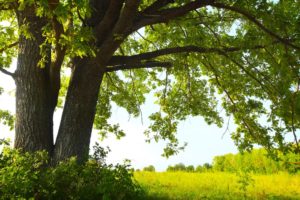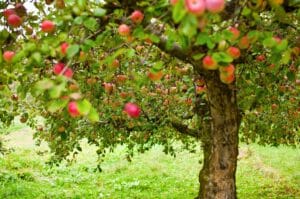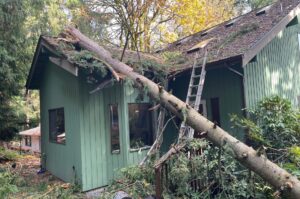Tree Work in Seattle’s Environmentally Critical Areas
Seattle’s Environmentally Critical Areas need protection. Learn what they are and how certified arborists keep them safe with compliant tree work.
A number of Environmental Critical Areas (ECA) have been identified throughout Seattle, Puget Sound, and other King County municipalities that play a vital role in protecting the environment and maintaining public safety. Governed by the ECA Code, Seattle’s Environmentally critical areas encompass various hazards like landslides, floods, volcanic activities, as well as conservation concerns such as wetland and wildlife habitat protection.
Understanding these areas and maintaining their integrity is crucial when doing any kind of tree work or development within them. In this article, we’ll explore more about what an ECA is, how ECAs impact tree work, and why you want a certified arborist with a thorough understanding of ECAs involved in your project.
What Are Seattle’s Environmentally Critical Areas?
In Seattle and surrounding areas, environmentally critical areas are designated areas that provide vital environmental functions and face specific challenges for development as defined by the Seattle Municipal Code (SMC) chapter 25.09.
Examples of ECAs in Seattle include:
- Shorelines
- Wetlands
- Landslide-prone areas
- Seismic hazard areas
- Flood-prone areas
- Hydrologically connected wetlands
- Submerged land
Additionally, ECA regulations address fish and wildlife habitat conservation areas, which include:
- Riparian watercourses
- Riparian management areas
- Areas designated by the Washington State Department of Fish and Wildlife as priority habitats and species areas
The goal of protecting these areas is to maintain slope stability, prevent erosion, and to protect water quality and wildlife habitat while allowing reasonable development within the locations they occur.
DID YOU KNOW? Seattle has the most restrictions for tree work done in ECAs than any of the surrounding areas including Puget Sound, Mercer Island, Shoreline, and any other King County city. You can check out this interactive map to explore Seattle’s environmentally Critical Areas.
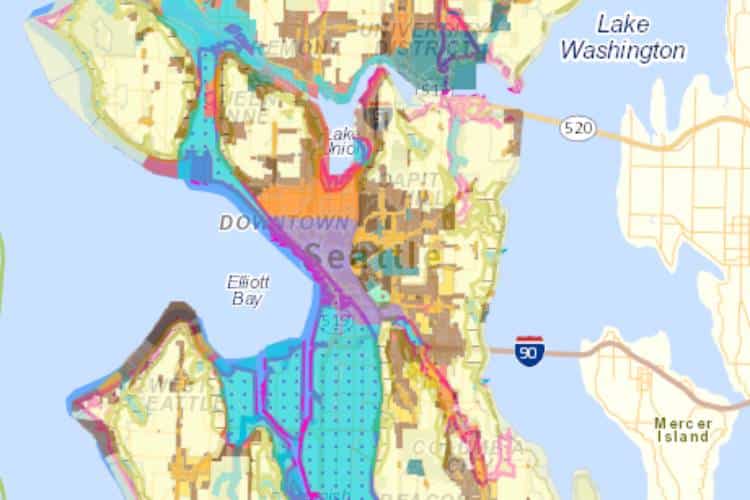
This map identifies the environmentally critical areas within Seattle. You can see an
interactive version of this map here.
How Do Environmentally Critical Areas Impact Tree Work?
Seattle’s Environmentally Critical Areas (ECAs) have an impact on tree work, including pruning and removal. Permits must be secured from the Seattle Department of Construction and Inspections (SDCI) for tree work in designated environmentally critical areas in Seattle. You can see an overview of tree and vegetation requirements for EACs here.
Tree pruning is a type of tree work that serves as an apt example of Seattle’s ECA requirements. Tree service companies must comply with ANSI A300 pruning standards to prune or trim trees in environmentally critical areas. A maintenance plan approved by a state-licensed geologist or a geotechnical engineer is an additional requirement. The exception to this is regular and routine maintenance of trees and vegetation, including limited pruning, which is allowed without a permit if the area of work is less than 750 square feet. However, if the maintenance area is larger than 750 square feet or, regardless of size, is in a landslide-prone area, the permitting requirement remains in effect.
Curious how ECA designation protects the structural stability of the land? Check out this video where Peter Gruenwoldt, Seattle Tree Care founder and co-owner, explains the importance of slope integrity.
To remove trees in designated ECAs in Seattle, you must follow specific regulations and obtain the necessary approvals from the Seattle Department of Construction and Inspections (SDCI). The City of Seattle’s ECA code only allows tree removal in ECAs in limited situations. You may remove trees as part of an issued building or grading permit or to mitigate a hazard tree. However, routine maintenance does not include the removal of trees. If you plan to remove trees in an ECA, you must submit documentation to the SDCI, including a tree removal plan and information about replacement trees.
The Importance of Working with a Certified Arborist
Environmentally critical area rules and the permitting requirements for working within them can be difficult for the average property owner to navigate. Additionally, illegal tree work can result in fines and damage to the environment, so hiring a Certified Arborist for any type of tree work is crucial.
Seattle Tree Care’s Certified Arborists are experts in working with Seattle ECAs and the ECAs in surrounding municipalities. We research every lead we get to understand how ECAs will affect your property and project ahead of time. Call us today at 206-789-0534 and see why we’re Seattle and Puget Sound’s most trusted tree service company.
Recent Articles
Looking for More?
We've got you covered with tips, resources, updates, how-to's, and other helpful information about trees and landscapes in Seattle, Puget Sound, and King County, WA. Join the thousands of smart local residents who get the monthly newsletter from Seattle Tree Care for helpful information you won't want to miss!
There's no spam - we promise! We are committed to keeping your e-mail address confidential. We do not sell, rent, or lease our contact data or lists to third parties.


